Abstract
Pure pancreatic juice was obtained from within the pancreatic duct in 54 patients after endoscopic cannulation of the papilla of Vater. In all 20 normal subjects there was a brisk response to intravenous injections of GIH secretin in small dosage (1 and 4 CU). Peak bicarbonate concentrations occurred after a 4 CU stimulus, whereas volumes, and bicarbonate and protein outputs were greatest after 70 CU. Total protein and amylase concentrations were highest in the first specimens collected from each patient, and fell rapidly after stimulation. Plateau levels for all indices were achieved 10-20 minutes after starting infusions of secretin and pancreozymin. When normal patients and those with chronic pancreatitis were compared, there was considerable overlap in all indices (volume, bicarbonate and total protein concentrations) after bolus injections of secretin. Most patients with chronic pancreatitis achieved a peak bicarbonate concentration in excess of 100 mmol/l. The median concentrations were not significantly different from normal after any dose of secretin when pooled 10 minute samples were analysed. However there were significant differences in peak bicarbonate concentrations (after 1 and 4 CU, but not after 70 CU), when one minute samples were compared. There were also statistically significant differences in the median 10 minute responses for volume after 1 and 70 CU, for bicarbonate output after 1, 4, and 70 CU, and for protein output after 70 CU. The results of juice studies in patients believed to have early chronic pancreatitis did not differ significantly from those in normal subjects or those with chronic pancreatitis. Endoscopic duct cannulation cannot guarantee complete recovery of pancreatic secretions, and measurements of volume and output may be inaccurate. When standard biochemical indices are used, the diagnostic role of pure juice studies is limited; further research may reveal more specific disease markers.
Full text
PDF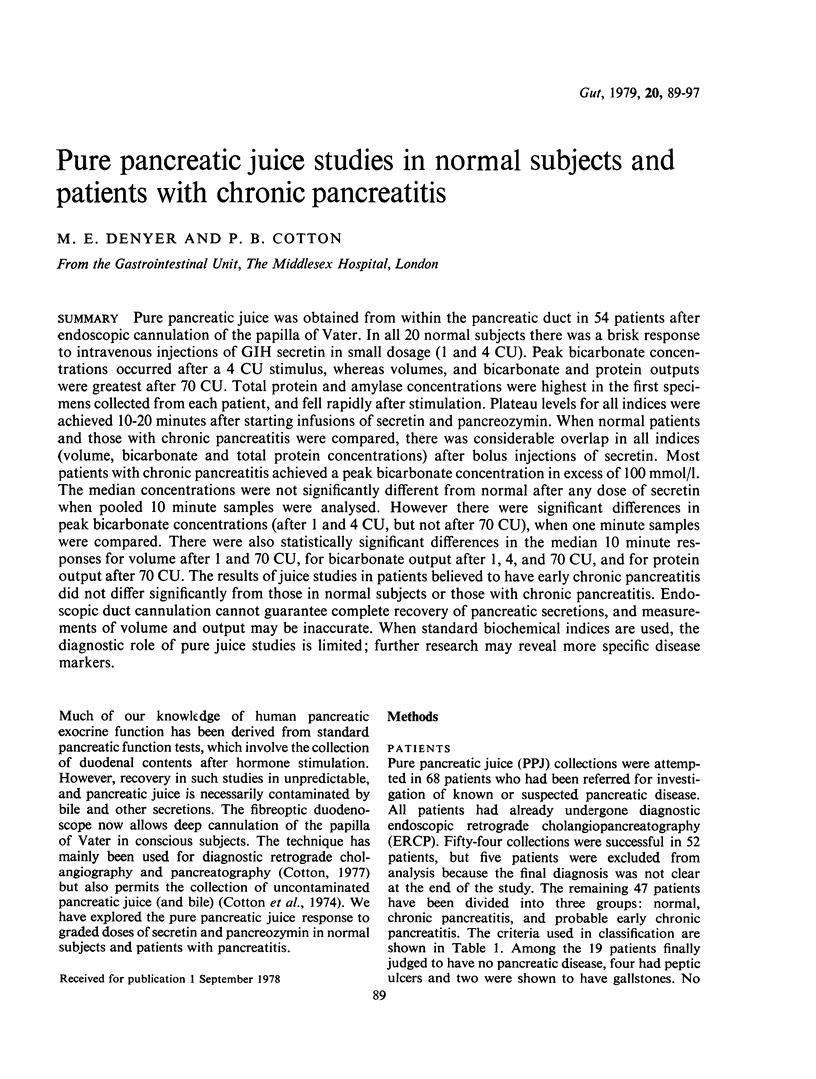
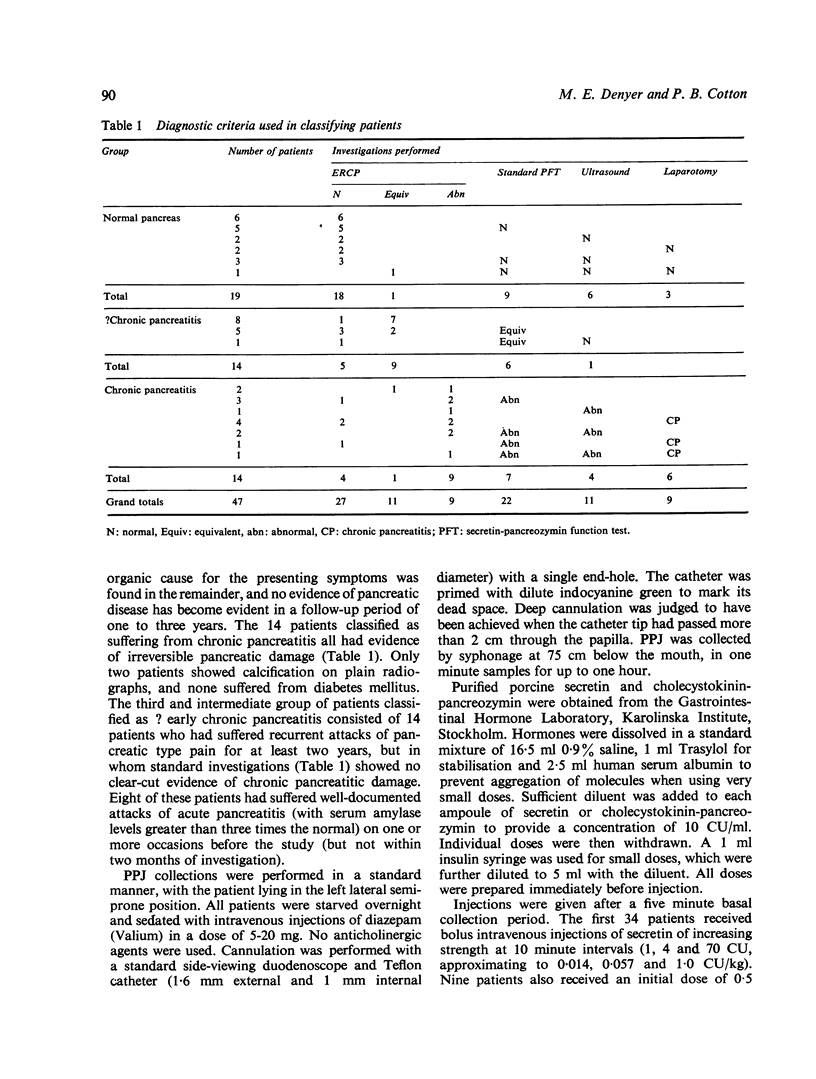
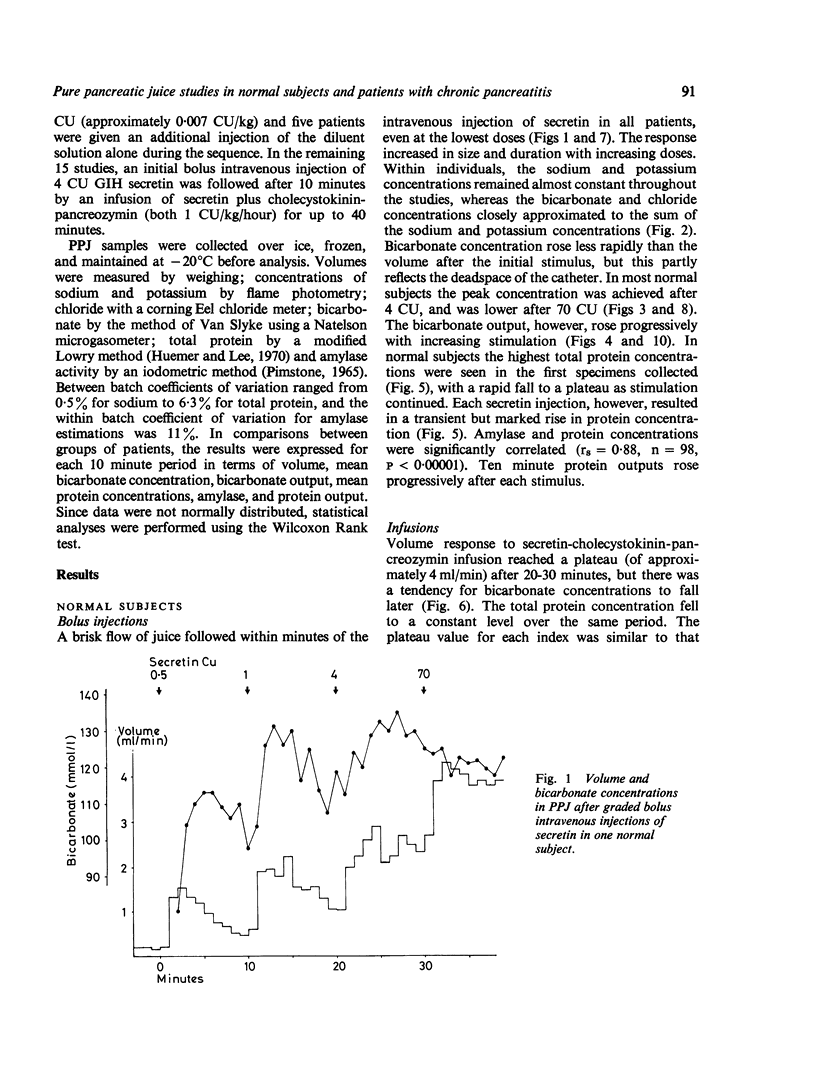
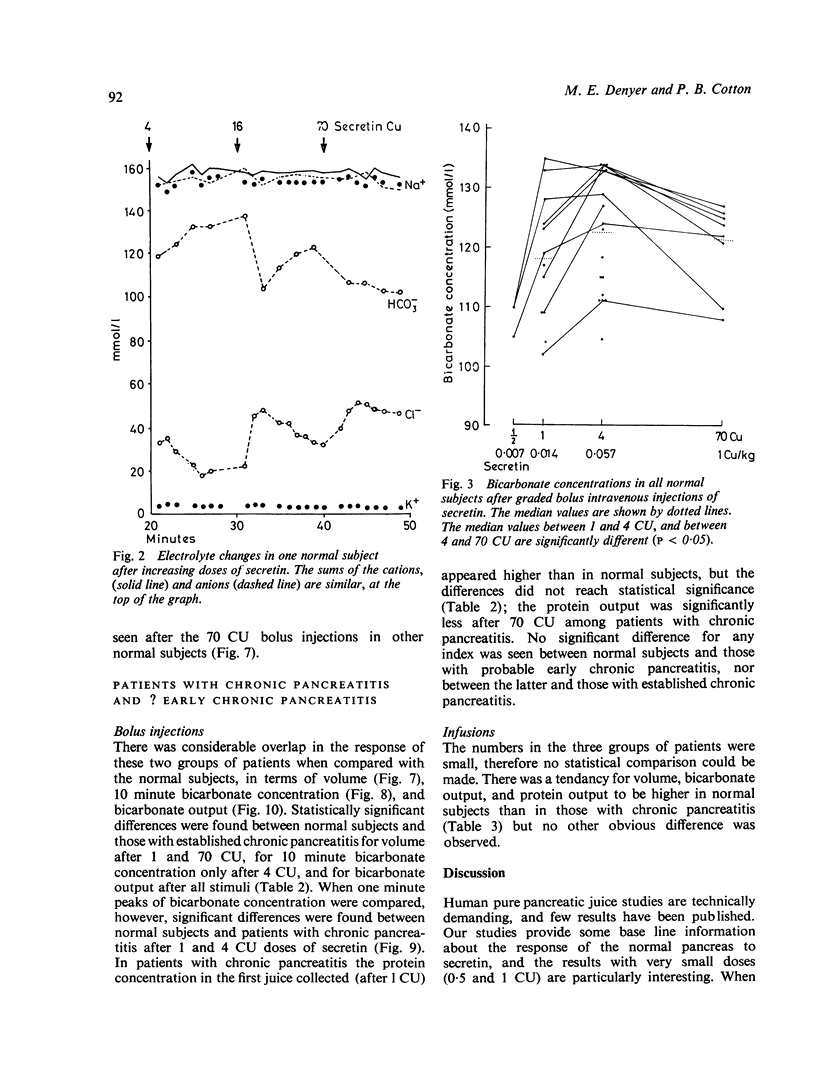
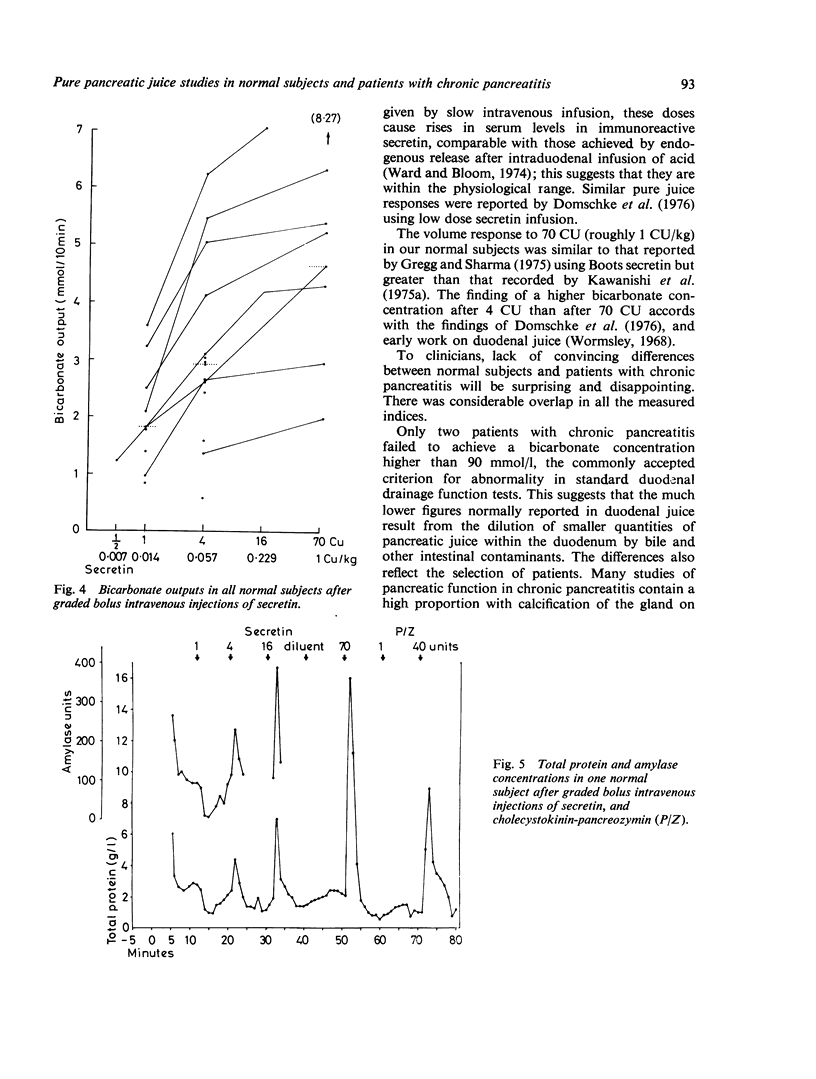
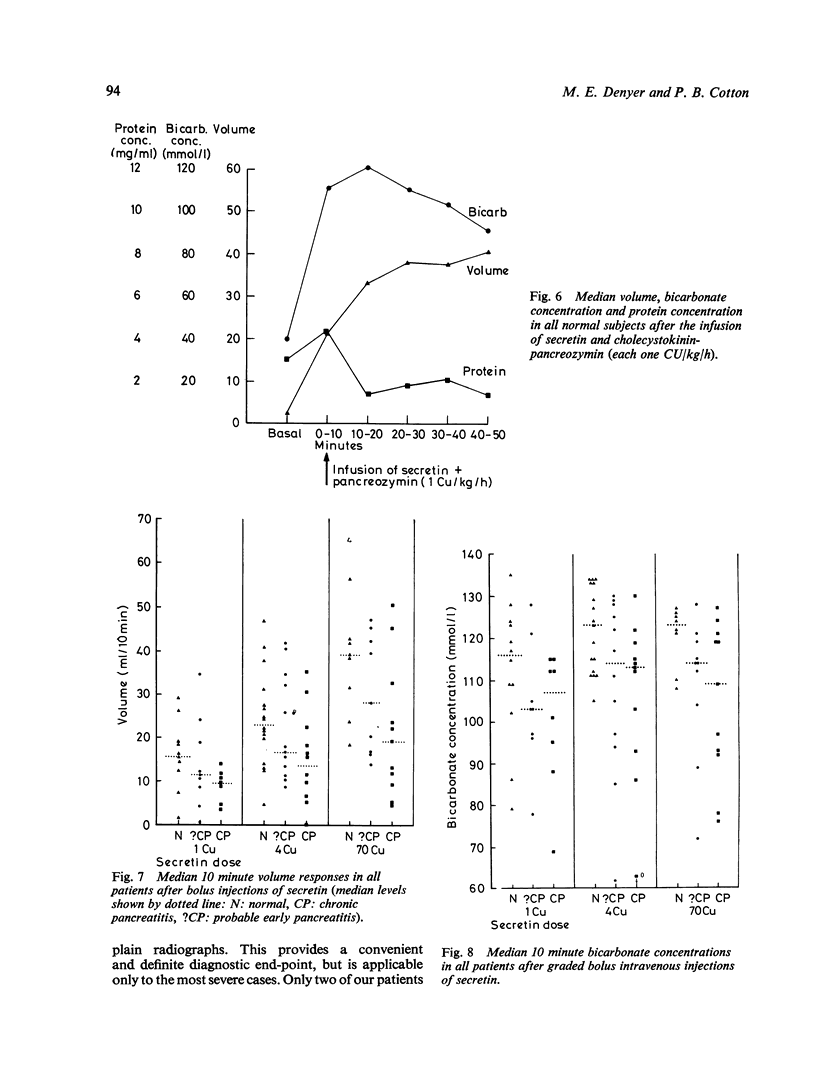
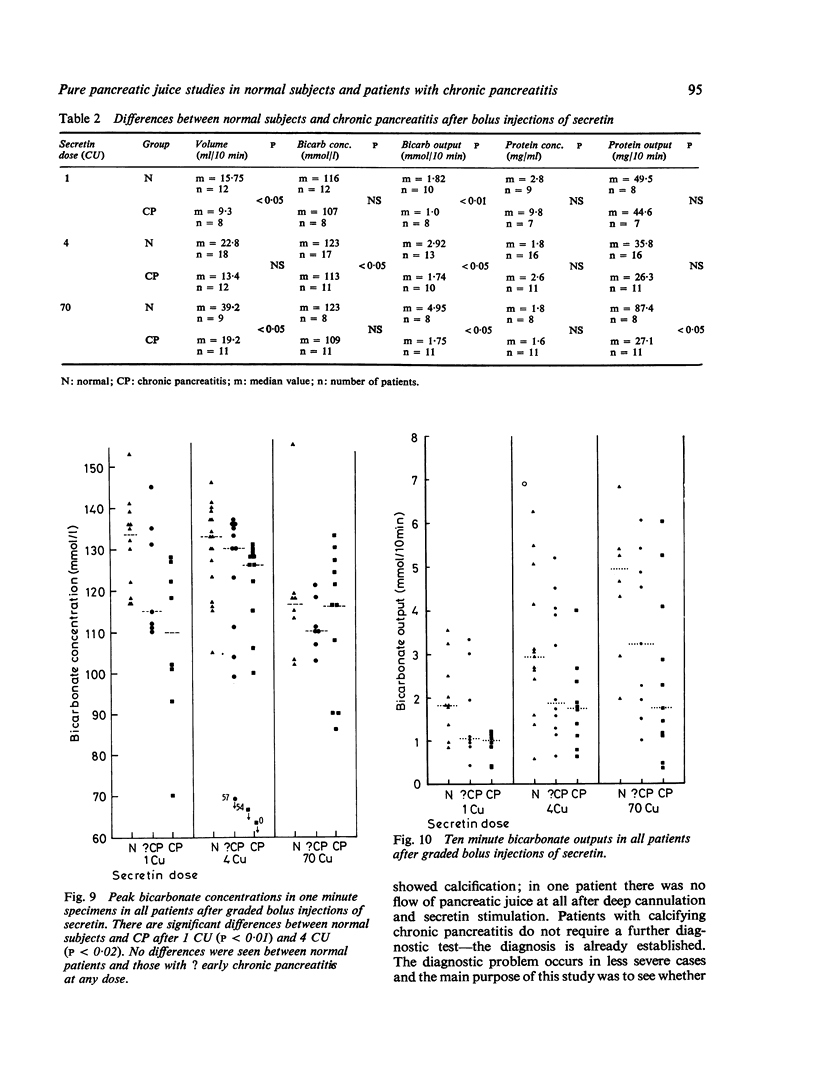

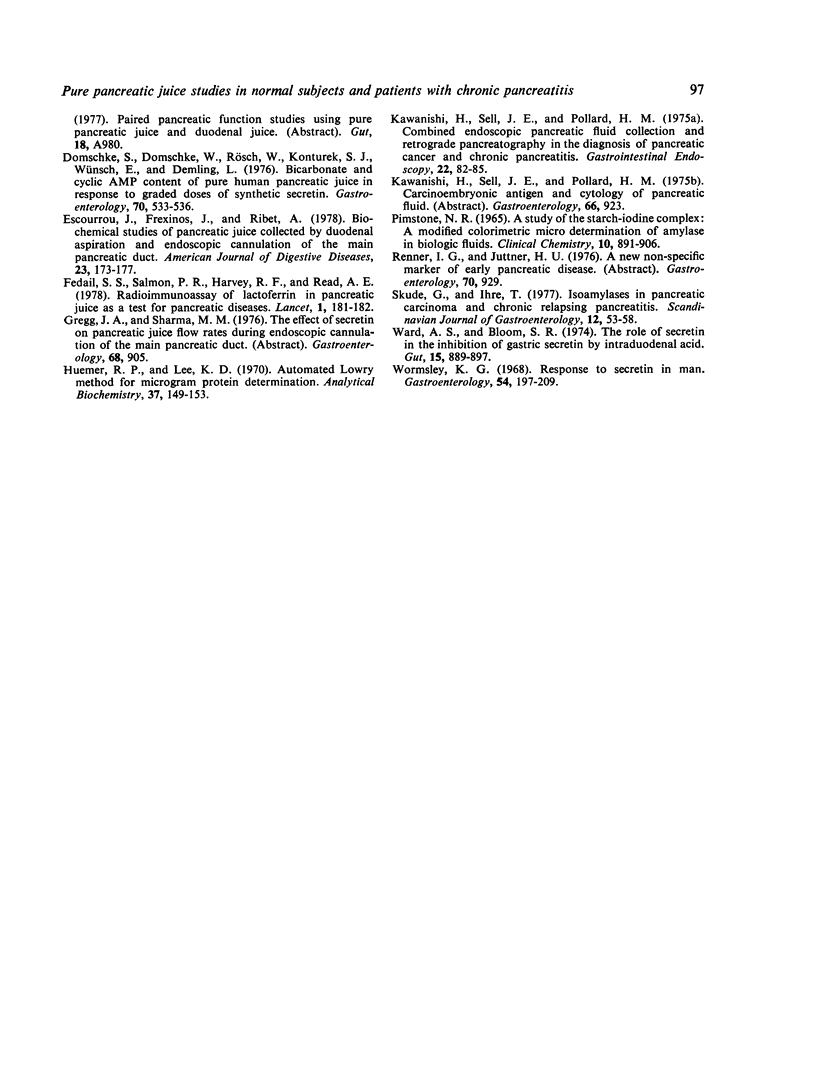
Selected References
These references are in PubMed. This may not be the complete list of references from this article.
- Allan B. J., White T. T. A refined cellulose acetate electrophoretic technique for analysis of human pancreatic juice. Biochem Med. 1975 Feb;12(2):166–182. doi: 10.1016/0006-2944(75)90109-x. [DOI] [PubMed] [Google Scholar]
- Colomb E., Estevenon J. P., Figarella C., Guy O., Sarles H. Characterization of an additional protein in pancreatic juice of men with chronic calcifying pancreatitis. Identification to lactoferrin. Biochim Biophys Acta. 1974 Apr 11;342(2):306–312. doi: 10.1016/0005-2795(74)90085-3. [DOI] [PubMed] [Google Scholar]
- Cotton P. B. ERCP. Gut. 1977 Apr;18(4):316–341. doi: 10.1136/gut.18.4.316. [DOI] [PMC free article] [PubMed] [Google Scholar]
- Domschke S., Domschke W., Rösch W., Konturek S. J., Wünsch E., Demling L. Bicarbonate and cyclic AMP content of pure human pancreatic juice in response to graded doses of synthetic secretin. Gastroenterology. 1976 Apr;70(4):533–536. [PubMed] [Google Scholar]
- Escourrou J., Frexinos J., Ribet A. Biochemical studies of pancreatic juice collected by duodenal aspiration and endoscopic cannulation of the main pancreatic duct. Am J Dig Dis. 1978 Feb;23(2):173–177. doi: 10.1007/BF01073196. [DOI] [PubMed] [Google Scholar]
- Fedail S. S., Harvey R. F., Salmon P. R., Read A. E. Radioimmunoassay of lactoferrin in pancreatic juice as a test for pancreatic diseases. Lancet. 1978 Jan 28;1(8057):181–182. doi: 10.1016/s0140-6736(78)90613-x. [DOI] [PubMed] [Google Scholar]
- Huemer R. P., Lee K. D. Automated Lowry method for microgram protein determination. Anal Biochem. 1970 Sep;37(1):149–153. doi: 10.1016/0003-2697(70)90270-8. [DOI] [PubMed] [Google Scholar]
- Kawanishi H., Sell J. E., Pollard H. M. Combined endoscopic pancreatic fluid collection and retrograde pancreatography in the diagnosis of pancreatic cancer and chronic pancreatitis. Gastrointest Endosc. 1975 Nov;22(2):82–85. doi: 10.1016/s0016-5107(75)73707-0. [DOI] [PubMed] [Google Scholar]
- PIMSTONE N. R. A STUDY OF THE STARCH-IODINE COMPLEX: A MODIFIED COLORIMETRIC MICRO DETERMINATION OF AMYLASE IN BIOLOGIC FLUIDS. Clin Chem. 1964 Oct;10:891–906. [PubMed] [Google Scholar]
- Skude G., Ihse I. Isoamylases in pancreatic carcinoma and chronic relapsing pancreatitis. Scand J Gastroenterol. 1977;12(1):53–57. [PubMed] [Google Scholar]
- Ward A. S., Bloom S. R. The role of secretin in the inhibition of gastric secretion by intraduodenal acid. Gut. 1974 Nov;15(11):889–897. doi: 10.1136/gut.15.11.889. [DOI] [PMC free article] [PubMed] [Google Scholar]
- Wormsley K. G. Response to secretin in man. Gastroenterology. 1968 Feb;54(2):197–209. [PubMed] [Google Scholar]


